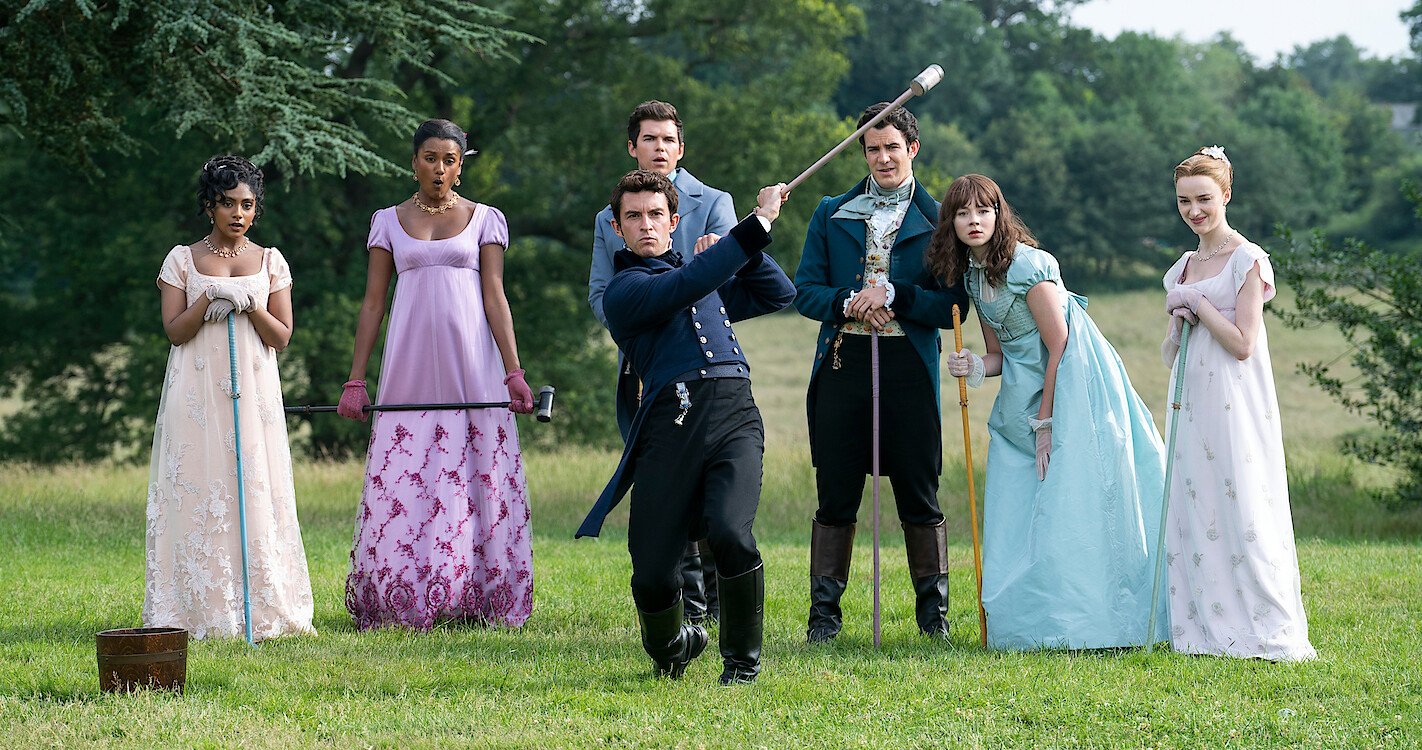From Lust to Love: Bridgerton Season 2 Review
Anna Royle
The period drama television series, Bridgerton, returned to Netflix with its second season on 25 March 2022.
Bridgerton is based on Julia Quinn’s novels set in Regency era England. The series was created by Chris Van and produced by Shonda Rhimes, with the first season debuting on Netflix on 25 December 2020. The series became a global sensation, garnering a viewership of 82 million households, and becoming the most-watched series on Netflix at the time of its premiere.
Fans waited apprehensively for season two, wondering if it was possible for it to compete with the first season. Season two reached number one in 92 counties amassing 193 million hours of viewing time in its premiere weekend, the highest for any English-language Netflix series in its first three days. It also recorded 251.7 million hours of viewing time the following week, breaking the streamers record for the most viewed English-language TV series.
However, despite these record-breaking numbers, fans were divided on their thoughts of the new season, with it being drastically different from the first. Instead of focusing on Daphne and Simons pretend relationship that inevitably turned into a real one, season two adapted a different trope, the classic enemies to lovers. Anthony Bridgerton (played by Jonathan Bailey) is due to marry Edwina (played by Charithra Chandran), who is part of the new Sharma family that have recently come to town. However, despite Anthony’s promise to fulfil his duty of marrying Edwina, it turns out Anthony’s heart lies with Edwina’s sister, Kate (played by Simone Ashley). At first, Anthony treats Kate like an obstacle in the way of him marrying Edwina as Kate feels the two are not suited for each other. But of course, in typical Bridgerton fashion, it turns out Edwina is the obstacle stopping Kate and Anthony from being together, despite their rocky start to their relationship.
This season was more focused on the slow-burn and tension of Anthony and Kate’s relationship, and included far less sex scenes than season one. Although some fans preferred this, claiming the series spent more time developing the plot, if you were a fan of the continuous raunchy scenes in season one, you may feel let down by their absence in season two.
One fan pointed out that the sex scenes that fronted season one were important to the premise of the series, “it really served to highlight how little knowledge females had of sex”. The same fan still preferred season two, though, stating that despite the lack of explicit scenes, “the camera work and dialogue were enough to capture the same sort of lust as season one.”
The lack of physical contact between Anthony and Kate meant that even a bit of eye contact, or the brush of a hand kept you on the edge of your seat, itching for them to confess their love for each other. Although the new season wasn’t as fast-paced as season one, it was even more bingeable. With Anthony and Kate being in denial about their feelings, you found yourself clicking on the next episode, unable to stop watching until their relationship evolved. When Anthony delivered the swoon-worthy line to Kate, “You are the bane of my existence. And the object of all my desires.” it perfectly encapsulated how we felt when watching the season: extremely frustrated with their relationship, yet extremely obsessed with it.
Lady Whistledown was introduced in season one, but it is only in season two that we truly see the mystery of her identity interfere with the other plot lines. This helps connect the separate storylines, and weave the characters together. With her identity being revealed to the audience at the end of season one, it still remains a mystery to the other characters throughout the season, causing the dramatic irony to add to the excitement.
Season two of Bridgerton also pays attention to family dynamics rather than just romance. This season explored the themes of duty and honour by developing nuanced and unique relationships. For example with Kate falling for her sisters’ suitor, and tackles the complex emotions Kate deals with. This is also prevalent with Anthony needing to fulfil his family’s honour by getting married, as well as the issues that arise with Penelope and Eloise’s friendship. The examination into these themes made this season feel even more credible and reflective of the issues prevalent during Regency era England.
Bridgerton has been recognised for its inclusivity and representation of people of colour and ethnic minorities. Season two continued to pursue this, with the introduction of the Sharma family being Indian, with Kate and Edwina being two of this season’s main characters.
On 13 April, Netflix confirmed that Bridgerton will get a third and fourth season. For now, we have no choice but to rewatch and speculate what breathtaking romances will come next, with season three likely being a year or two away.
Anna Royle is deputy culture editor at The Scoop and is an English with Creative Writing student at Queen’s University Belfast



